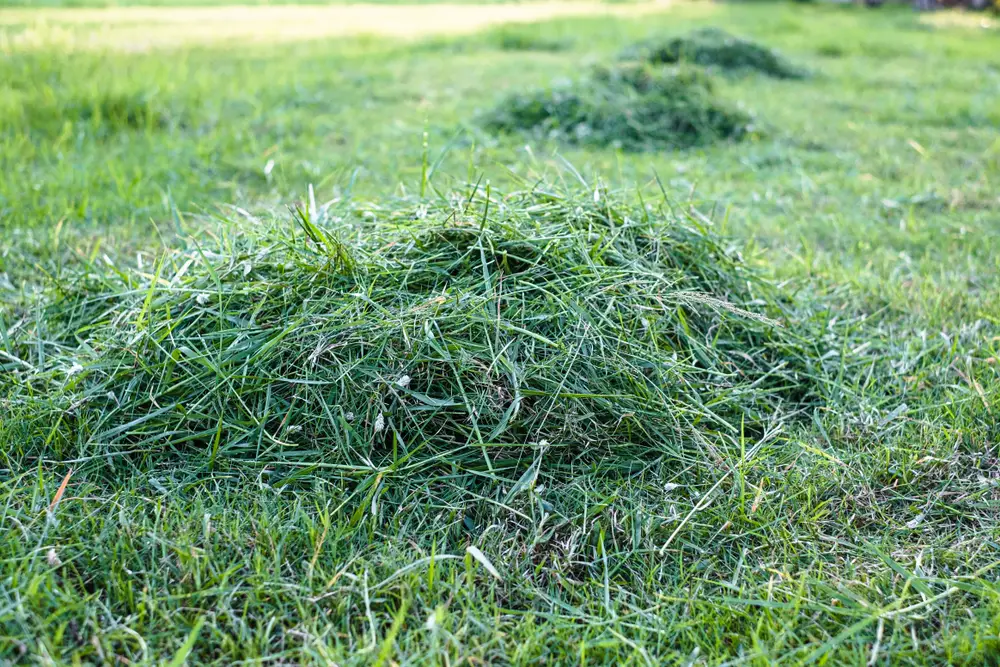Grass clippings are very versatile. You can even use them to fertilize the soil for grass and plant life. But does that mean grass can grow from grass clippings?
Grass cannot grow from grass clippings directly. You can use grass clippings as fertilizer, mulch, or other aids to help grass grow.
In this content you’ll learn:
Basic Info About Grass Clippings
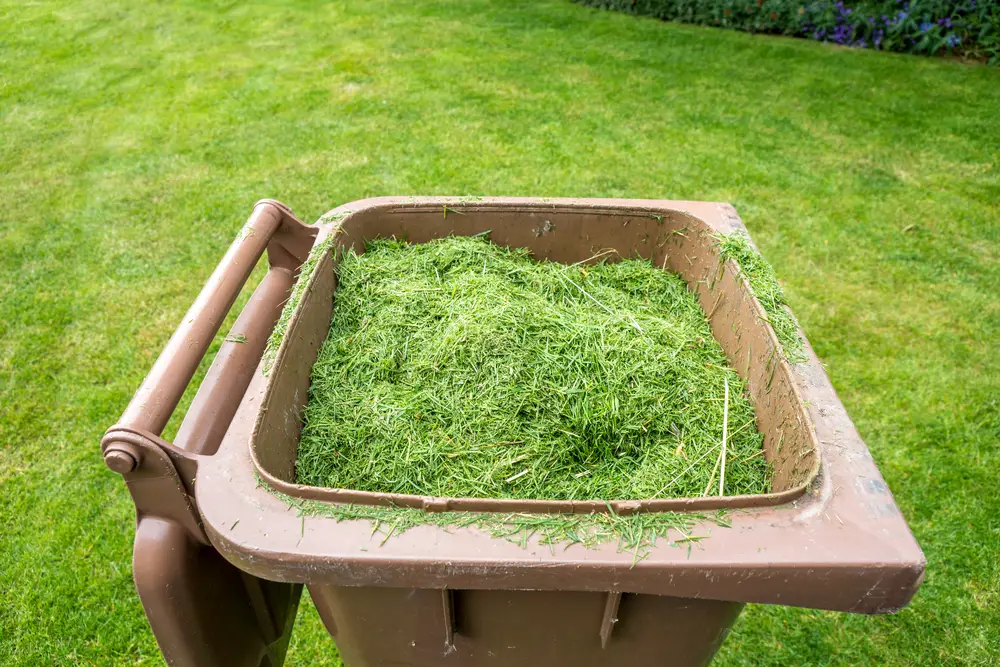
Grass clippings are the short-cut grasses left behind on your lawn when you mow. They can provide many essential nutrients to your lawn, your garden plants, and even some pets (although we don’t really recommend this).
Typically, your lawn will need cutting once weekly during the time of year when it grows at its best (late spring to early summer), also known as the “growing season.” During this time, you will get a constant supply of nutrient-dense clippings to use in many ways. This is especially true regarding soil and plant fertilization.
Can Grass Grow From Grass Clippings?

Properly maintaining your lawn every week means it’s almost impossible for your grass clippings to produce more grass, as they do not have enough time to go to seed (produce seeds).
Typically, you can keep ahead of grass growth if you stick to the one-third rule. The one-third rule requires you to cut only one-third of your grass’s total height at a time. You can usually do this weekly and will ensure your lawn does not go to seed because you’ll be cutting the grass before the seed heads form on the top of the blade.
After a cut, it can take your grass about 1-2 months to reach the point where seeds develop, depending on the type of grass present in your lawn. The seeds will appear as oval-shaped seed heads that develop on the tip of the blades of grass, with a more sandy color to them.
However, even though your weekly grass clippings don’t grow new grass from scratch, you can still use them to help your lawn grow stronger and healthier and assist new seeds you have spread to germinate (sprout and grow).
What Grass Clippings Can Do Instead
Grass clippings can provide vital nutrients to your lawn and the soil supporting it! Just like every other plant on earth, grass contains the same three vital elements for survival: nitrogen, phosphorus, and potassium. Nitrogen is the most important, promoting proper growth, reproduction, development, and photosynthesis.
Nitrogen is present in grass at about a 4% concentration, and you can use this in many ways to fertilize your lawns and plants. Grass is also 80% water, and you can therefore use it as a fantastic water supplement within the soil as it decomposes and maintains proper moisture levels in the environment.
When Do We Want More Grass To Grow?
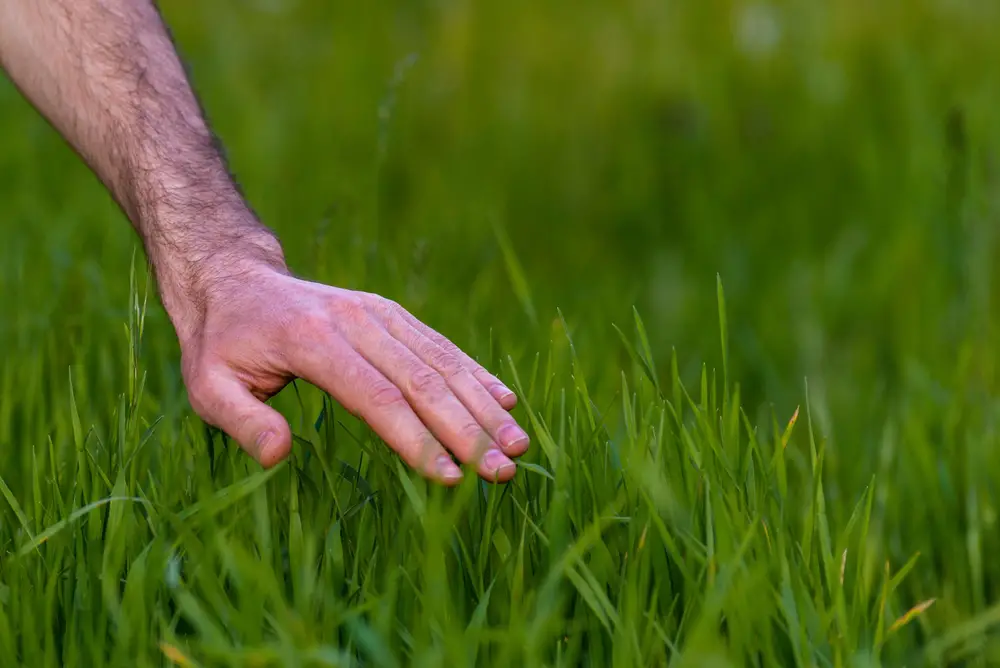
Grass seed may be a rare natural occurrence in our well-maintained lawns, as it takes 1-2 months to grow. However, in some cases, we still may need it to spread, or we can spread it ourselves. Doing so will help in the following ways.
Increasing The Beauty Of Your Lawn
By spreading grass seed, you encourage more grass to grow, making it luscious and thick. A dense spread of grass always looks more inviting and contributes to the curb appeal of your property.
Thicker grass reduces balding patches or damaged areas and feels better under your feet.
Filling In Dead Or Empty Patches Of Your Lawn
Spreading more grass seed over your lawn helps fight off dead or empty patches in your lawn! You will decrease these dead patches by simply raking up the grass to help the soil breathe, casting your seeds over the area, and keeping the soil evenly moist until the seeds sprout.
First, though, consider that these brown patches may indicate your lawn could have a fungal disease. Contact a professional, who can quickly identify and treat a disease, if you’re concerned this is the case. Once treated, freely reseeding these patches helps your grass fight future fungal invasions.
Fight Back Against Weeds
Promoting further grass growth by spreading more seed chokes out the weeds that may be present on your lawn. By ensuring the seeds we disperse have germinated and are growing, we can maintain the new growth and make our lawn thicker and healthier. This will force the weeds out because they won’t have space to grow!
To successfully fight back against weeds, we have to overseed at the right time of year. This is right before weeds are established (meaning they’re showing new growth) in early spring or after weed growth starts to taper off (early-mid autumn). Overseeding when the weeds are thriving will not work because they have already grown and won’t be choked out. So if you want to overseed your lawn, but it is a little too late, it is best to wait until the next season.
How Grass Clippings Can Help New Grass Grow
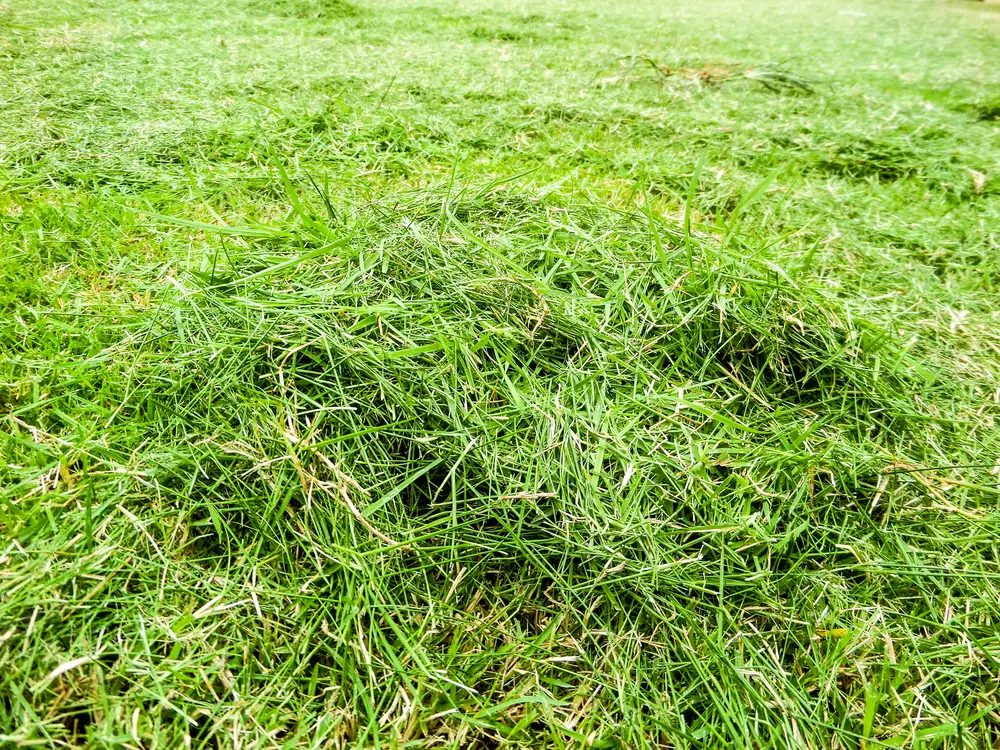
Even though grass clippings won’t commonly grow new grass when spread, they can assist the grass’s growth in other ways. Grass clippings are nutrient-dense. Using them as, for example, a cheap and natural alternative to other growth aids helps your lawn to stay healthy and thrive.
Let’s start with using them as a liquid fertilizer.
A Quick Note About Drying Out Grass Clippings Before Using Them
It’s best to dry out your grass clippings for most uses. This reduces matting, which occurs when too much wet or fresh grass is left out to dry in thick arrangements, causing solid patches that do not allow proper water and oxygen penetration into soil. You can dry clippings best by laying them in a thin layer, no more than one inch, for 24 hours on a warm, sunny day.
However, it is best to use fresh clippings as a liquid fertilizer. This produces the best results in extracting the proper elements in the fermentation process.
As A Liquid Fertilizer
Grass clippings can fertilize your lawn and garden by providing 4% nitrogen content as it breaks down. I find that one of the best ways to provide this fertilization is through a liquid fertilizer!
Plants typically absorb liquid fertilizer faster than other fertilizers as the liquid seeps through the soil and straight into the roots (the most actively absorbent part of plants like grass).
You can make this at-home fertilizer by filling a five-gallon bucket with two-thirds fresh grass clippings, then filling it with water, and leaving the full bucket in a warm and shaded place for 3-4 days to ferment. After this, you may dispense one half to a full cup of the mixture on the soil under any plant.
Alternatively, you can put the liquid fertilizer in a liquid fertilizer dispenser and apply it to your lawn like a commercially available liquid fertilizer. The nutrients from the grass will be recycled and returned to the source they came from!
As Mulch
You may also use grass clippings as a natural mulch option in the garden and on the lawn.
You can mix them into the soil in your garden. This helps retain proper moisture content, allows adequate oxygen transfer into the plant, and provides direct nutrients through the soil as it breaks down.
For your lawn, leave the clippings where they lie after you mow. Rake them out if they lie in clumps or lines. They will decompose, and your lawn will absorb their nutrients.
Continue to cut over your clippings each time you mow. This assists in properly distributing and breaking them down into the soil.
By Providing Them With Proper Warmth And Moisture
Grass seed needs to keep a proper, consistently warm, moist environment to germinate or sprout. Grass clippings can provide this when they are left on the lawn.
If you have overseeded your lawn recently, I find it’s best to leave the clippings on the lawn after you mow. This will provide the little grass seeds with a sort of “blanket” of necessary warmth. The grass clippings will also provide a perfectly moist environment by acting as a barrier to retain moisture in the soil below. Plus, as grass decomposes, its 80% water content will also be used.
Keeping Seeds Safe
After overseeding, a protective layer of grass clippings over your lawn helps protect the seeds from the wind. It also helps reduce the chances of water run-off taking them away from where they’re supposed to be, as the clippings catch the grass seed before this happens.
This extra protective layer also reduces the likelihood of animals, especially birds, eating your grass seeds, making them harder to find. Grass clippings alone won’t completely remove the loss of some seeds due to birds and other animals, but they’re sure to reduce it.
How To Encourage Grass Growth
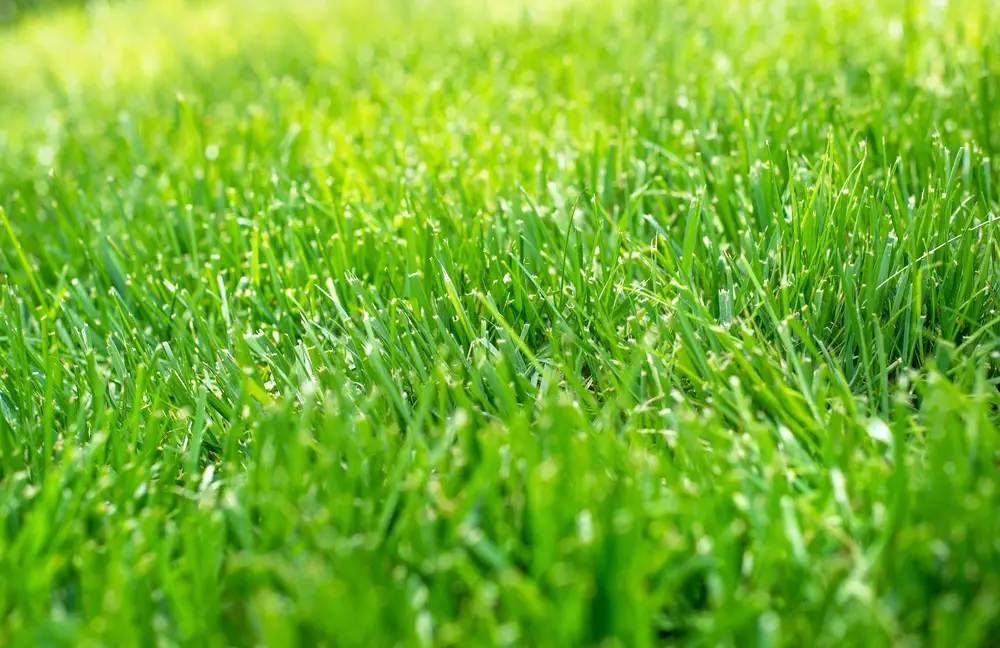
Also known as “reseeding,” overseeding adds more grass seed to a lawn without turning the topsoil (turning over the uppermost soil layer, breaking it up, and so on). Every case is different! Some lawns might need this once a year due to drought or disease, and others may only require overseeding once every few years to keep the lawn looking full and well-kept.
Overseeding will also choke out weeds and fill in bare lawn patches!
The Steps To Take
To reseed, we need to get the seeds in contact with the soil. So, the first step is to mow your lawn slightly shorter than usual to allow the seeds to reach the soil easily. Next, rake over your grass to loosen clippings and any other debris.
Make minor changes to your soil pH if necessary. You can identify these changes after a soil pH test, available at most hardware stores. Your soil’s pH, or level of acidity, is meant to be neutral on a scale of 0-14. This would be anywhere between 6-7.
Keeping your soil pH in this range is vital because a neutral pH soil contains the proper mineral content and nutrients available for plants. If the soil is too acidic (0-5.9 on the pH scale) or too alkaline (the opposite of acidic and 7.1-14 on the pH scale), your lawn may be experiencing poor growth due to some mineral toxicities or deficiencies.
After the necessary changes, you can spread grass seed with a seed spreader (either handheld or push). The seed spread density will depend on your lawn’s thickness at the time. Also, the type of seed you choose will depend on your climate and lawn’s grass type.
Next, you want to add grass seed fertilizer to a fertilizer spreader (you can use your seed spreader for this) and disperse this across the newly seeded lawn. The fertilizer type you use will depend on your choice of grass seed.
Finally, you can water your newly seeded yard! You can water for a short time each day in the mornings to maximize water intake, as the chance for evaporation increases throughout the hotter parts of the day. You want to only water for a short time so as not to overwater the lawn and drown or wash away the seeds. Too much water can also prevent germination (a plant growing from a seed) and cause fungal growths to appear.
Can Grass Clippings Cause Any Problems?
As great as grass clippings are, they can cause some problems too. This includes potentially spreading weeds (even to your garden!).
Weeds And Weed Seeds
If your lawn naturally has many weeds, weed particles, and seeds will likely find their way elsewhere on your lawn (and into your garden), especially dandelions. These weeds spread through external factors, such as wind or animal/human intervention.
Simply walking by a dandelion that has gone to seed will allow the seeds to loosen and fly away. They can spread especially far from your mower discharge while clinging to the clippings. These seeds will implant themselves wherever they land, including your garden.
Preventing this requires implementing an organic weed-killing herbicide into your lawn care routine. You could also overseed your lawn before weeds become firmly rooted in the springtime.
Pesticides And Herbicides
Remove any treated clippings from your garden beds. If you do not, you risk these chemicals leaching (spreading, leaking) into your garden plants’ roots. This could cause anything from stunted growth to plant death.
If these treated clippings come into direct contact with the leaf, and depending on the chemical composition and how recent your last lawn treatment was, pesticides can cause burns on your plants. Symptoms may include leaf spots, blotches, scorch, or tip burn. However, the most likely way your treated grass clippings affect your plants will be through their decomposition into the soil, allowing these chemicals to come into contact with the root system.
Diseases
Generally, you can tell if your lawn is diseased by the presence of discoloration. This is the most obvious sign, with colors ranging from yellow to tan and then to brown.
When your lawn is diseased, you want to contain the spread by picking up and disposing of all clippings. This is especially important when it comes to fungal diseases. Fungi contain spores that spread very easily, whether by wind, water, mowing, or walking over the diseased lawn. These actions will cause the spores to fly up in the air and spread, so we want to minimize the damage as much as possible by removing these clippings from our gardens.
In rare cases, some strains of fungi on our lawns may negatively affect people. So, even though it is rare, it is always best to research and ask a professional before taking care of fungal lawn disease. You may also wear gloves and a mask when cleaning up, just to be safe.
Final Thoughts
You can still remove grass clippings from your lawn and garden even though they can’t grow grass. There are other ways to nourish and protect grass. Removing the clippings also removes any included weeds, pesticides, herbicides, and turf disease.
